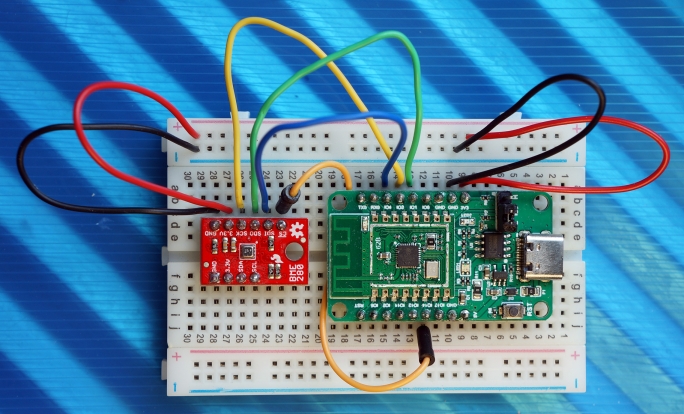- 15 Posts
- 30 Comments
What do you hope comes after it ?
This looks incredibly polished, given that it is a quite new development. I did not even know that you could use a Windows Laptop as a display/keyboard 😀
I don’t think virtual cards are meant to be more anonymous? My understanding is that it prevents that your original card details get stolen in online transactions
I use it for quite some time and am happy with it. I have not noticed bad search results but also have not compared really. I general I have found what I was looking for.
 41·4 years ago
41·4 years agoI always feel to connect some cables and make a light go blink blink very satisfying. There are cheap sets with all sorts of cables and lights/sensors.
Then choose your language of choice and make it blink/summm/ measure the temperature/air pollution or so
Once you have it choose another language and repeat 😀
(BTW, I use a Raspberry Pi 3 as a Nextcloud server, works fine, this might depend on your expectations)
It’s not a review website in that sense, but I sometimes find slant.co quite useful.
The usual questions are best for this, best for that…
Sounds a bit it like writing in Markdown or org-mode and then use the tool of your choice (e.g. Pandoc) to produce the formatted result.

 2·4 years ago
2·4 years agoI am using both, LibreOffice and MS Office for work. Mostly to experience how it works. On my work laptop I only have LibreOffice 7.0 (the company provides the software and should update it) so not the latest.
In the end I use Calc over Excel, not because Excel is bad per se, but because for my use case it does not make a difference and LibreOffice feels more fresh. I also use PowerPoint over Impress, as there were several things in Impress that did not work so well (making a table smaller, show lines to align form to other elements, …).
Pacman does not update or install AUR packages. That’s probably the main difference between pacman and yay (or similar AUR helper)

 2·4 years ago
2·4 years agoOk, out of interest, how does this work?
You (as aggressor) scan all your known mobile numbers agains let’s say Signal and discover that some numbers use Signal. That I understand. But now what? Unless you are the company Signal you would not have access to further data, or ?

 8·4 years ago
8·4 years agoI have a Nextcloud for my own, works mostly well, but it requires some effort here and there and I oft wondered what my dear users would say (if there were any) if it takes me several days again to fix some small issues or renew the certificate. Plus I know nothing about security and can only hope everything is all right. Once you set email, messenger etc. up for larger groups I could see the efforts to keep this stable and secure to be quite high. It’s probably a good solution for the privacy problem but I am not so sure that it is a solution that is manageable or even available for many and therefore a good solution overall.

 22·4 years ago
22·4 years agoWhen it comes to states spying you then there is no safety. The state can always just send someone over to put a gun on your head (or the legal equivalent) and voila, you yourself give them your data.
And I understand that states are very different in their (perceived) legal integrity, but if I should guess ( no evidence) then all the encryption and safety development benefit criminals most. Also some journalists and dissidents but mostly criminals to do their criminal business and in the whole, if you have the fortune to live in a state that can be mostly trusted I prefer that Police has some lever identity this kind communication. Not in-similar to when Police is allowed to tap your phone (after a judge signed off). Not many people where concerned about that.
So so in the end I feel the bigger threat are private companies who sell all your data for the highest bidder regards of the bidders intention. And provided you trust Signal, ProtonMail and Tutanota then they definitely reduce the risk there (imho).

 1·4 years ago
1·4 years agoI think an important difference is that we are comparing companies that definitely sell your metadata to companies that could sell your meta data but where there is no known case (to me) that they actually do, e.g Signal. So it comes down to trust.

 12·4 years ago
12·4 years agoI just noticed that this video is also available on Odysee.
https://odysee.com/@RobBraxmanTech:6/signal-unsafe:7
I don’t know this platform, but can’t be as bad as YouTube, no ?

 8·4 years ago
8·4 years agoHmm, the style of the video is maybe a bit pushy and I am not sure if it is useful to make a case with the Facebook, Whatsapp, Instagram connection and then turn around and say because this lot is bad all other alternatives like Signal etc. are equally bad, but I have to admit that it makes you think.
I have read several times that meta data leaking can be as bad as access to the actual message and I think he explains well why that might be.
I am less clear what to do about this. It is unlikely to set up a network of people and only communications with them in this network and at the same time to ensure that no one in this network communicates with anyone else. So they communicate with you, but only you ?
My view is that I am less concerned about state access to my (meta) data. They have a lot anyway, with certificates, passport, medical record etc… My concern is that this data is used and misused for a small fee by private companies and here it seems to comes down to trust. Do I really think that Signal or Tutanota sell my data in the same way as Facebook does ? Other than that I don’t see how people who want to be able to communicate in the digital world with other less tech savvy people can do so.
Are there projects out there who next to encryption focus on minimising or avoiding meta data?

 3·5 years ago
3·5 years agoThe PineTime is available as dev.kit. https://pine64.com/product/pinetime-dev-kit/?v=0446c16e2e66
Means the open source support is not a polished end-user product. Be prepared to at least install the InfiniTime image yourself. This in it’s own is slightly more complex than copying an image somewhere and ready. I would say that in this moment the PineTime makes most sense if you are interested in exploring embedded technology.
Support with tools to develop is available now, but if you don’t want that then I would currently look elsewhere. That said, the PineTime is great to explore embedded programming and has a lively community.

 2·5 years ago
2·5 years agoI have the PineTime and it’s great, although at first open source software support was almost zero it has developed nicely in the past year. For ease of use the USB connector alone can make things so much easier though.
edit: To clarify: The PineTime does not have an USB connector. You have to use the SWD interface What I mean is that Watchy has an USB connector and that can make things easier.

 5·5 years ago
5·5 years agoYour phone is listed as unofficial build for /e/ OS. /e/ is based on Lineage OS and pretty much de-googled https://e.foundation
In this list you can find your phone: https://community.e.foundation/t/list-of-unofficial-e-builds-part-2/18956 An unofficial build is essentially a build from a member of the community I have no experience with this build, so check before you use it














Not a perfect fit but Firefox can annotate PDFs out of the box. Maybe in some cases that is helpful ?